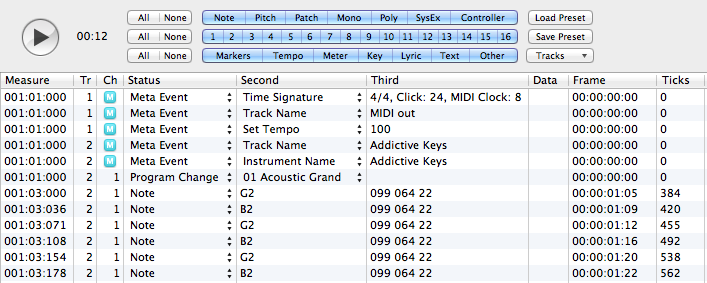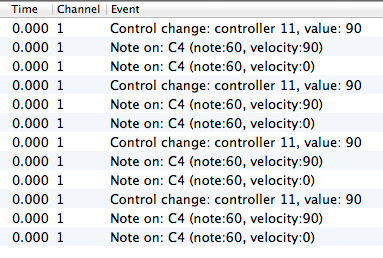Jaws75 wrote:Thanks for the informative post, i do understand the logic behind it . . .
Glad to help! 
Doing digital music production at the dawn of the early-21st century is at least as complex as running a Fortune 500 corporation or flying an interplanetary spaceship, and for most folks it does not have the corresponding financial rewards either (a) ever or (b) until sometime in the perhaps not so distant future, but so what . . .
So what! Jaws75 wrote:I wonder if bach, beethoven etc had to worry about all this claptrap. To me its like going backwards instead of a step forward.
The way I put everything into what I think is a practical perspective is to consider the realities for arrangers, composers, lyricists, musicians, singers, producers, audio engineers, and mastering engineers several centuries ago, where the latter two sets of folks mostly were focused on such activities as designing, building, and maintaining instruments . . .
[
NOTE: I include conducting and directing in the roles I generally assign to "producing", although these roles also are included as part of "arranging" . . . ]
In those days, which actually continued until perhaps 10 years ago, although more realistically perhaps 5 years ago, being able to do what everyone today considers to be completely and totally normal was something reserved for only a few people, primarily because it was so expensive . . .
From this perspective, the thing I ponder is what all the people who did
not have the vast resources that were available to Bach, Beethoven, Mozart, et al. did, and for the most part it is not difficult to guess, because in general they did nothing, because economic realities prevented them from doing anything other than composing pieces that nobody every played, if they could afford paper and had enough time after doing their regular jobs . . .
In the late-1960s, the Beatles had generated sufficient revenue to be granted the privilege of hiring an orchestra to play on a few songs, as was the case with other hit recording artists, and this was the reality 50 years ago, which basically was the reality in the days of Bach, Beethoven, Mozart, et al., where it was a rare luxury to have access to an orchestra . . .
Yet today, you have 24x7 access to the London Symphonic Orchestra professionally recorded at Abbey Road Studios and the ability to compose any genre, type, and style of music you desire, especially if you augment the NOTION 4 Bundled Instruments with Expansion Sounds and third-party VSTi virtual instruments, which with a few thoughtful selections literally maps to having an on-call symphonic orchestra with perhaps 100,000 musicians and instruments, ready, willing, and able to do whatever you tell them to do via music notation in NOTION 4 . . .
If you happen to play an instrument proficiently and sing, then you can include at least one real instrument and some singing, which even if you are not so skilled in singing in tune is not a problem when you use the Melodyne Editor (Celemony), which among other things does pitch correction and so much additional stuff that it is a bit mind-boggling, to the point that someone skilled in using the Melodyne Editor can make Bob Dylan or Tom Wait sound like Celine Dion, albeit perhaps a bit "auto-tuned" . . .
[
NOTE: The Melodyne Editor also can be used with instruments, and it has the ability to analyze and quantize polyphonic music, although in a practical way for one instrument or set of voices at a time, where for reference if you are singing through a VoiceWorks (TC-Helicon) vocal processor that creates four-part vocal harmony, the Melodyne Editor can separate it into distinct parts, which you then can adjust, edit, and enhance . . . ]
Melodyne Editor (Celemony)With a peppy MacBook Pro; a nice selection of VSTi virtual instrument and sampled sound libraries; a nice set of AU and VST effect plug-ins; a condenser microphone; and perhaps an electric guitar, you can do a virtual note-for-note "Sgt. Pepper's Lonely Hearts Club Band" (Beatles) album inside a Volkswagen Beetle, as is the case for "The Dark Side of the Moon" (Pink Floyd) and every other selection of songs, including everything that Bach, Beethoven, Mozart, et al. did several hundred years ago, and depending on how well you sing or the types of choral sampled sound libraries you have, it can sound just as good, especially if you know (a) how to produce, mix, and master and (b) for at least a few hours have access to a calibrated full-range studio monitor system, which for reference is the only way accurately to mix and master, because for a variety of reasons headphones will
not work for final mixing and mastering . . .
Switching to MIDI for a moment, it is vastly complex, but if you do the required reading, studying, and experimenting, then it makes sense after a while, and if you know how to do software engineering it becomes possible to understand intimately what happens behind the scenes in a digital music production application like NOTION 4, as well as the various MIDI utilities for the Mac like MidiKit and MidiSpy, which if you understand how NOTION 4 works makes some fascinating activities both possible and practical . . .
[
NOTE: In a practical sense, NOTION 4 is a MIDI editor, and this is one of the reasons that it makes sense to understand MIDI, or at least some of it . . . ]
THOUGHTSBach, Beethoven, Mozart, et al. had their own sets of problems, but they had the opportunity to do what they did, which during their lives was a rare luxury that was denied to nearly everyone else for a variety of reasons . . .
Today at the dawn of the early-21st century, all those opportunities are available to everyone who has a digital computer or mobile computing device; some carefully selected digital music production hardware and software; and the desire to arrange, compose, write lyrics, play, sing, mix, produce, mix, and master songs and other types of music, and while it requires money, it does not require an unusual amount of money, where as an example if someone has 10 to 20 hours of free time each week; a lawnmower; and a bit of entrepreneurial skill, I suggest that for most folks it is possible to make enough money in a few months mowing lawns to purchase a very nice digital music production system which is at least sufficient to get started and to begin doing the reading, studying, and experimenting required to make sense of all this stuff . . .
And the truly stellar aspect--which is distinctly different from the way things were several hundred years ago and continuing until as recently as perhaps five years ago--is that nobody can put impenetrable locks on the opportunity door and by doing so keep it closed forever to everyone except a handful of people . . .
Making sense of all this stuff can be very frustrating at times, but my experience strongly suggests that if someone works on it diligently, then sooner or later it begins making excellent sense, and then there you are, which is fabulous . . .
Fabulous! 


